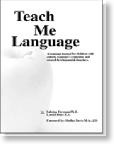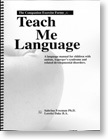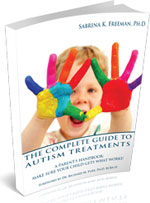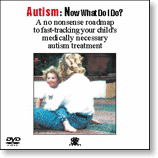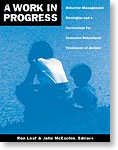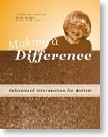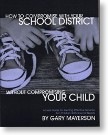Are there any Summer camps that do disability inclusion right?
I recently landed upon a website of a camp called Ramah that I think is actually doing inclusion right. Based on the six-minute description offered by the director of their special needs programs, it has been a process from segregation to integration based on parent request. In short, this is a Summer camp that actually listened to parents in their community!
The camp describes a four track orientation, with segregated cabins for some campers and vocational training during camp; however, they also offer an integrated cabin experience where they train staff prior to camp, and add an extra counsellor so that there is sufficient staff to ensure that the child with special needs is properly supported.
What impressed me most is that some of these campers with special needs actually went on to be hired by camp and became staff members themselves. That’s truly putting your money where your mouth is! Let’s hope that other camps emulate this model and truly integrate children with special needs into their communities.
Do Kids With Autism Eventually Learn to Speak?
Here’s my review of Predictors of Phrase and Fluent Speech in Children with Autism and Severe Language Delay, a study based on the Simon Simplex Collection (SSC), which is a large multisite data base project collecting a variety of information on families who are in some way affected by autism.
Wodka, Mathy and Kalb set out to ask two questions:
- What is the rate of language acquisition of children with autism who, by age 4, had not put words together in phrases? and ...
- What factors did predict when these children would learn to speak in phrases?
Using a very large sample of 372 children with Autism Spectrum Disorder (ASD), these researchers found that higher IQ and less social impairment were good predictors of eventual ability to speak in phrases. They report that 70% of the children in the database eventually learned to speak in phrases by eight years of age, and that 50% of the entire sample eventually became fluent speakers.
For the moment, let’s put aside the few methodological problems with the study (e.g., over-reliance on retrospective parental reporting by using a parent interview [ADI-R] and a parent checklist [Child Behavior Checklist]) and take what these researcher claim as accurate. Every parent is still waiting for the answer to the burning question:
Which treatment programs created such great outcomes? What makes kids with autism talk?
Regrettably, here’s where the study falls short. Although the researchers tip their hat to Behavioral Treatment when they mentioned a prior study by Pickett and colleagues that found participation in Behavioral Intervention programs and IQs over 50 were predictors of developing speech after 5 years of age, these researchers did not actually measure the effect of behavioral treatment programs on the acquisition of speaking in phrases. This omission is unfortunate because the reader is left with the impression that as long as the child has an average non-verbal IQ, and evidence of social interest, the child is likely to spontaneously speak in phrases without intervention. This is an erroneous conclusion because the study did not measure whether the children were in treatment or not. In other words, kids don’t magically attain speech when afflicted with the debilitating disorder of autism - there is usually a lot of heavy lifting involved, in the form of lengthy, intensive and expensive behavioral treatment.
Going forward, I would like to see the researchers control for treatment when studying our children. The study is only valuable if we know which treatments create the outcome of 50% of the entire sample eventually becoming fluent speakers!
One heartening finding in the Wotka et al. study is that there was no relationship found between “stereotyped behavior/repetitive interests” and language acquisition. The take-away message here is that we shouldn’t look at children who are hard to reach because self-stimulatory behavior is blocking the world out as somehow being less able to acquire language.
Children with autism most certainly can acquire language, as long as they have access to quality treatment for the disorder.
What Keeps You Up At Night?
I had the privilege of sitting on the panel for the Association for Behavior Analysis International (ABAI) conference in Oregon in January. The last day of the conference was devoted to parents. Parents on the panel were asked to address an important topic.
Question: What Keeps You Up At Night?
Since I’ve been thinking about this rich topic for a long time, I thought I’d share the thoughts I presented at the ABAI conference, in their entirety. The presentation is posted below.
____________________________
What keeps me up at night? That’s a very rich topic, and you’re looking at an insomniac! If I could sum up in a phrase, it would have to this: JUNK SCIENCE.
Why should parents care about junk science?
The concern is that Junk Science will win the autism treatment war and successfully block effective treatment for children with autism. This would have ramifications for children not yet diagnosed, just diagnosed, or already in effective treatment programs.
In other words, Intensive Behavioral Treatment based on the principles of Applied Behavior Analysis, is going to be replaced by ineffective programs that will be served up by the 1000’s of treatment purveyors who are masquerading as legitimate, effective treatment professionals.
Why do I see things in such a negative light? Here are some very dangerous trends:
Junk Science is becoming more sophisticated
When my child was diagnosed over twenty years ago, there was no shortage of quackery. But when a parent asked for scientific studies, if the quacks were organized, they’d supply newspaper articles or testimonials, but no studies in peer-reviewed journals. Twenty years later, treatment quackery is published in poor-quality journals, some of which are written by academicians. In addition, there are now books full of uncontrolled case studies, which are no better than testimonials but come with a patina of legitimacy.
Convergence
The second trend I see is what I’ll refer to as convergence. In this case, a number of treatments that have never had any scientific support are combined and offered in an eclectic program. This often masks the fact that there is no data that demonstrates treatment efficacy, and thereby fools parents of newly diagnosed children into evaluating the treatment program as worthwhile.
An even more problematic issue are the treatments with no decent data outcomes that sprinkle a little behavioral treatment into their program and then compare their program to what is available in the community, which is generally general special education, which is not typically optimal for children with autism. So now substandard treatment competes with glorified babysitting. In this false contest of autism treatment, the treatment with a modicum of ABA that is being tested will outcompete the control.
Although it may be politically incorrect to say, this is the big problem with the Early Start Denver Model. In 1987 – 1998, the Denver Model (originally cased the “playschool”) did not present itself as a behavioral treatment program for autism. Back then, the “Playschool” was primarily play therapy. The Early Start Denver Model now incorporates ABA. They published a 2010 study where they took:
“Forty-eight children diagnosed with ASD between 18 and 30 months of age were randomly assigned to 1 of 2 groups: (1) ESDM intervention, which is based on developmental and applied behavioral analytic principles and delivered by trained therapists and parents for 2 years; or (2) referral to community providers for intervention commonly available in the community.”
Now these researchers created results showing how great their model is as compared to glorified babysitting. Why should we care? We should care for two reasons:
First, this wastes our children’s valuable time with treatments that are diluted at best and we know that diluted treatment doesn’t create best outcomes. Over twenty-five years ago, Lovaas (1987) demonstrated sub-optimal outcomes when he provided highly quality behavioral treatment to a control group for 10 hours a week.
Based on their research, the Early Start Denver interventionists seem to be overly concerned with saving money on the backs of our kids. They seem to be interested in a) less intensity that costs less, b) parents as therapists aka free labor, and c) long distance training of therapists which costs less. The unifying theme appears to be “let’s save money”, not “what works best” for the kids.
Of course, I have no issue with providing quality treatment more efficiently; however, before trying to save money, researchers in other fields first attempt to create the best treatment for the malady they are targeting. To illustrate, cancer researchers aren’t thinking about saving money when they develop innovative treatments for cancer. Why are children afflicted with autism somehow deemed to be children of a lesser god, where economizing on treatment is more important than effectiveness?
Academic literature reviews
The 3rd trend that keeps me awake at night are the growing number of so-called academic literature reviews on autism treatments. Governments rely on these reviews to make decisions about whether to fund intensive behavioral treatment. Many of these so-called “independent” reviews are generally created by health care economists whose job is, essentially, to save gov’ts money by only funding what they, in their gate keeper capacity, deem to be science-based treatments. That sounds great until you understand that this group of health policy analysts is either:
In the back pocket of gov’ts with government owned medicine such as Canada, the U.K., or Denmark, or
Honest in their mission but do not understand the politics of the autism wars and are influenced by their international colleagues who may have a darker agenda, like the British Columbia Office of Health Technology’s shameful work against kids with autism in Canada’s landmark Auton case for publicly funded autism treatment.
Due to the highly politicized nature of this area, the consumer should not put any trust in any literature reviews on autism treatment. Before believing any recommendations, the informed consumer should go directly to the source article. Unfortunately, most people trust these health care economists who are in the business of rationing treatment. It’s analogous to having the fox guarding the chicken coop.
In the U.S., parents have been wildly successful at lobbying and litigating against health insurance companies. The autism lobby has also been very successful in getting autism mandates passed in the majority of states that require autism treatment to be covered by the insurance companies in that state. However, these academic literature reviews are dangerous because they are calling intensive behavioral treatment “experimental” which is the “get out of paying for it” card used by health insurance companies, whether private or government owned. This this fraudulent health policy trend is going to block our children from access to intensive behavioral treatment.
That’s what keeps me awake at night.
*This talk was originally presented at the Association for Behavior Analysis International (ABAI) conference in Oregon, Sunday, January 27th, 2013.
A New Animal Study Shows Autism Reversal May Be Possible
This edition of Nature is significant insofar as it has an article on the reversal of autism in mice.
Researchers first had to create autism in mice by knocking out a specific gene. They then administered medication to reverse the damage. The fact we are even seeing this kind of sophisticated research after decades of pseudo-science is very exciting! It’s the sort of thing we could only dream about not long ago.
Although the drugs used in this study are currently inappropriate for humans, the fact that they’re even talking about drug reversal of autism suggests that one day, there may be a drug that significantly ameliorates the condition of autism or perhaps eliminates it entirely.


